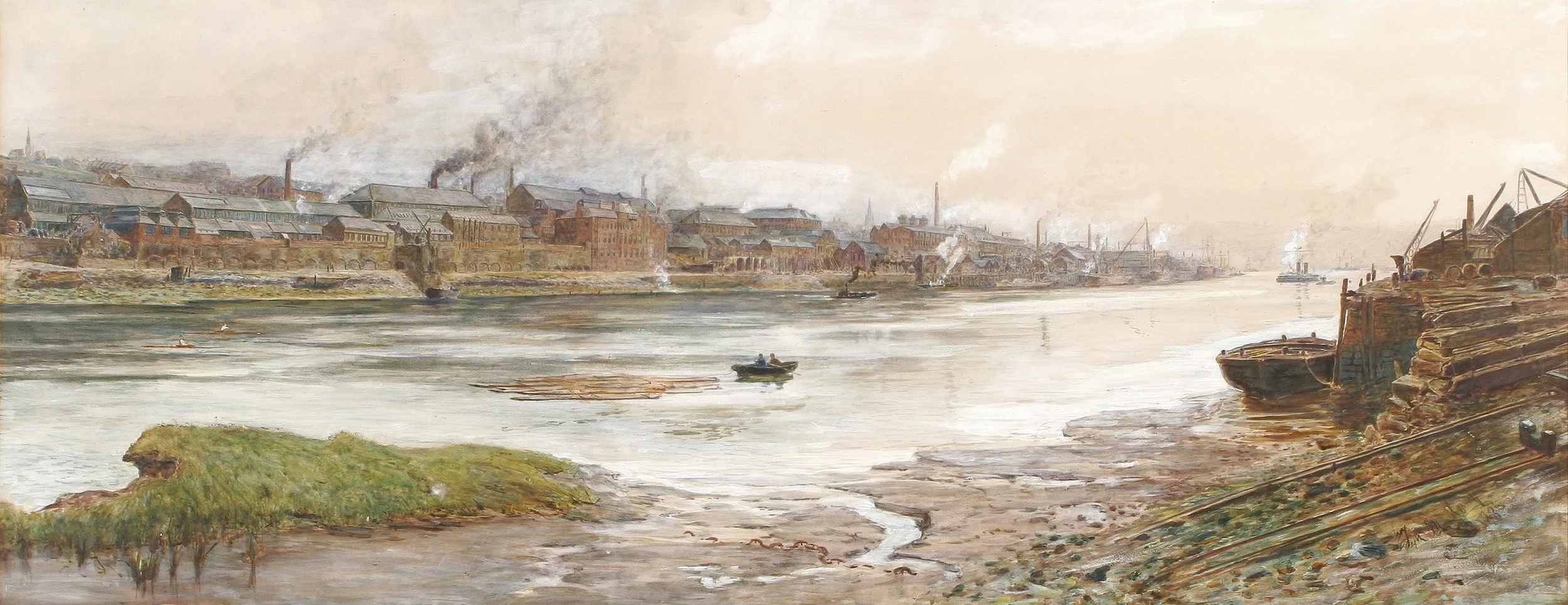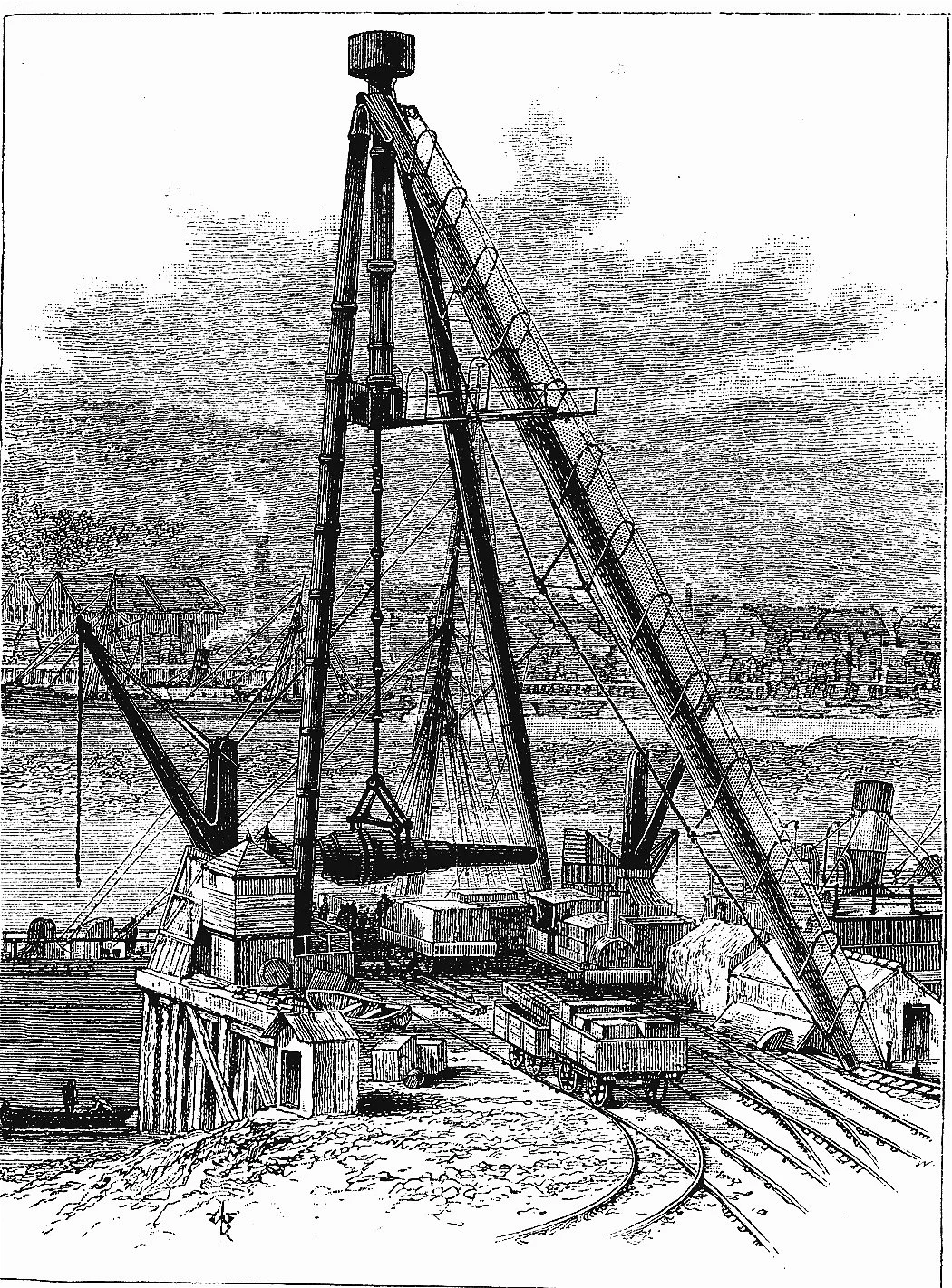Industry
‘The Elswick Works’ by Thomas Hemy (1886). By the end of the 19th century, the works stretched for one and a half miles along the north bank of the Tyne and covered well over 300 acres. (National Trust, Cragside)
High tide on the Tyne
Armstrong’s business career had begun modestly, with the establishment in 1847 of a small factory at Elswick on Tyne, a mile or so upriver from Newcastle, producing hydraulic cranes and other machinery. By the time of his death half a century later, in 1900, the Elswick Works had evolved into a globally renowned shipbuilding and armaments concern. It was also the target of controversy, having (legally) sold ships and arms to foreign powers.
In 1889, a decade after the merger with Charles Mitchell, Armstrong Mitchell – originally a pioneer of gunboats – had been the sixth biggest shipbuilder in Britain; during the next decade it periodically occupied first place.
Following a further merger in 1897, with Whitworth of Manchester, pressure on space at Elswick continued to grow, and more land was acquired at Scotswood, upriver from the original site. New facilities were built there, including a brass foundry, shell shops, an explosives factory, saw mills and, eventually, a motor-car department. The Elswick Works came to occupy a frontage of one and a half miles on the Tyne’s north bank and cover more than 300 acres.
By the time the Walker Naval Yard opened in 1912, the prosperity and fame of Sir W. G. Armstrong Whitworth & Co. had acquired almost legendary status. ‘The works was one of the sights of Newcastle,’ wrote a former employee, ‘and the name of Armstrong was used almost as an incantation.’
Armstrong Whitworth continued to thrive in the years up to, and especially, during the First World War. Meanwhile, however, Vickers of Sheffield and Barrow in Furness were steadily gaining ground on their rivals – and, in some areas, overtaking them.
In 1927, in the midst of an economic crisis, the two firms merged to become Vickers-Armstrongs Ltd. The new merged company firm went on to make an unparallelled contribution to Britain’s defence and attack capabilities during the Second World War. It would survive until the 1980s, until broken up in a complicated series of mergers and takeovers.
From the end of the 19th century, Armstrong’s was more fully integrated than any comparable business. ‘All the war stores made in all the private establishments in England put together would be a small quantity compared with those made at Elswick,’ wrote the weapons expert Charles Orde Browne in 1896.
He identified the works as ‘perhaps the only establishment in the world that will turn out a first-class man-of-war complete with all her armament’. In 1881 the firm had employed some 4,000 people; 20 years later the total was nearer 25,000.
Hydraulic cranes and other machinery, the foundation of Elswick’s success, were installed in docks and shipyards around the world.




